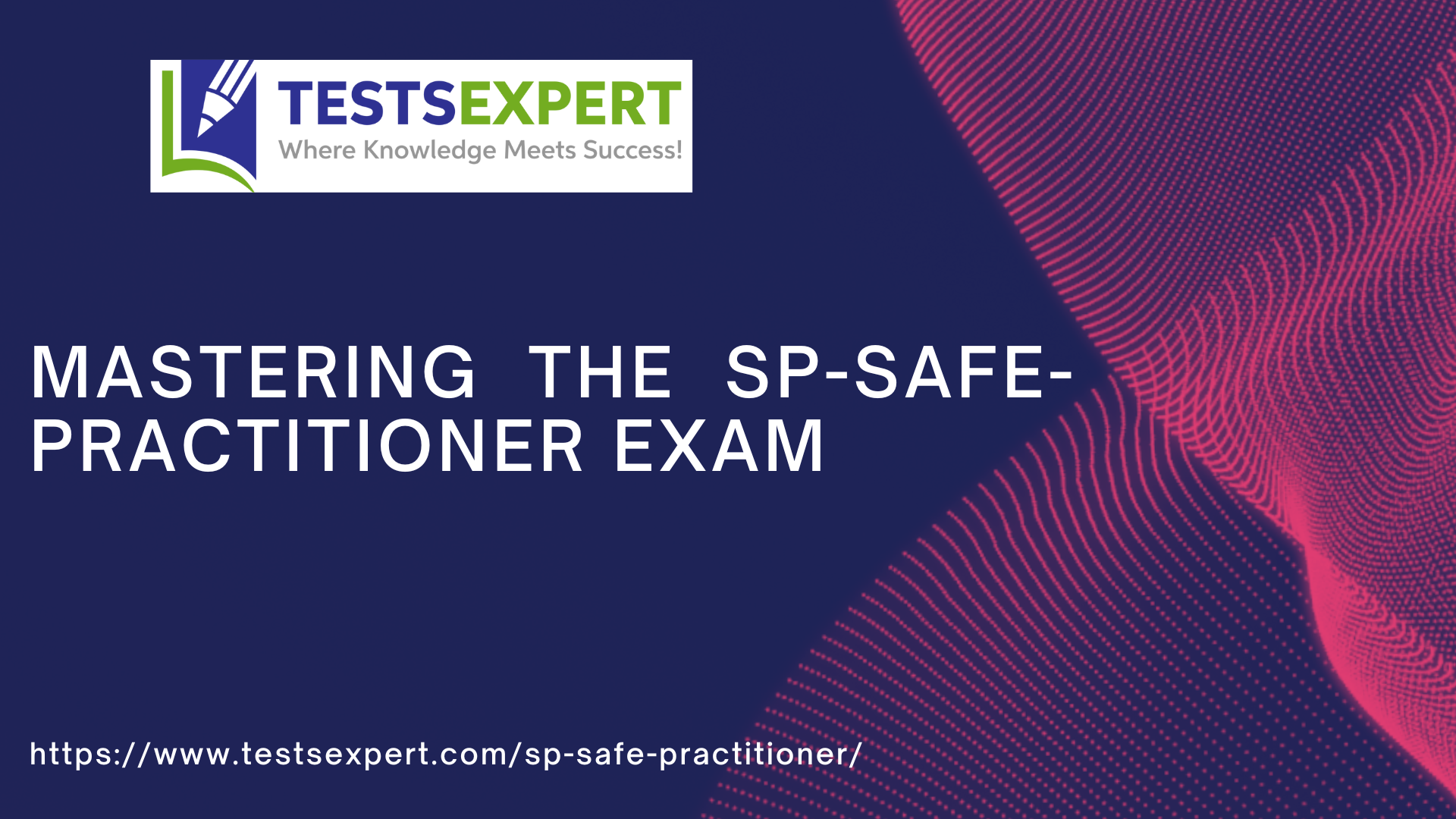Mastering the SP-SAFe-Practitioner Exam A Comprehensive Guide
In the dynamic landscape of project management, the Scaled Agile Framework (SAFe) has emerged as a leading methodology to enable organizations to scale Agile and lean practices. The SAFe Practitioner (SP) certification is a crucial step for professionals looking to validate their expertise in applying SAFe principles at the team and program levels. This article delves into the key aspects of the SP-SAFe-Practitioner exam, offering insights and strategies to help you navigate this certification successfully.

Understanding the SP-SAFe-Practitioner Exam:
The SP-SAFe-Practitioner exam assesses a candidate's knowledge and skills in implementing Agile and SAFe practices within their teams and projects. It covers a range of topics, including Agile principles, SAFe principles, Lean-Agile mindset, and the application of SAFe to scale Agile across the organization.
Click here for more information:
https://www.testsexpert.com/sp-safe-practitioner/
Key Exam Domains:
Agile Principles: This section evaluates your understanding of the foundational Agile principles and how they align with SAFe practices. Focus on concepts like iterative development, collaboration, and customer feedback.
SAFe Principles: Delve into the SAFe Big Picture and the core principles that underpin the framework. This includes Lean-Agile mindset, organizational agility, and the role of Agile Release Trains (ARTs).
Lean-Agile Mindset: Demonstrate your grasp of the Lean-Agile principles and how they contribute to organizational success. Understand the importance of continuous improvement and the relentless pursuit of quality.
SAFe Application: Showcase your ability to apply SAFe practices in real-world scenarios. This involves implementing Agile Release Trains, coordinating multiple teams, and ensuring alignment with organizational goals.
Preparing for Success:
Study Resources: Utilize the official SAFe training materials, including the SAFe Big Picture, Lean-Agile principles, and case studies. Supplement your learning with reputable Agile and SAFe literature.
Hands-on Experience: Practical experience is invaluable. Apply SAFe principles in your workplace, lead Agile teams, and actively participate in SAFe ceremonies. Real-world experience enhances your understanding and retention of concepts.
Mock Exams: Familiarize yourself with the exam format by taking practice tests. This not only helps identify areas of weakness but also improves your time management skills during the actual exam.
Community Engagement: Join online forums and communities where SAFe practitioners share their experiences and insights. Engaging with a community provides a valuable support network and a platform to discuss challenging concepts.
Maintaining the Optimal Keyword Density:
To enhance the discoverability of this article, it's important to maintain a keyword density of 1% to 2%. Keywords like "SP-SAFe-Practitioner," "Agile principles," and "Lean-Agile mindset" should be strategically incorporated without compromising the natural flow of the content.
The SP-SAFe-Practitioner exam is a gateway to validating your proficiency in applying Agile and SAFe practices within your organization. By focusing on key exam domains, utilizing study resources, gaining hands-on experience, and engaging with the SAFe community, you can confidently approach the exam and embark on a journey towards mastering the Scaled Agile Framework. Good luck!
Click here for more information: